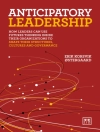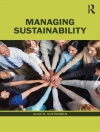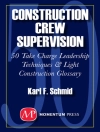‘What a ‘kick’ I get out of teaching from Images of Organizations. What a head-snapping view of organizations it offers to my MBA students, as well as to the odd client/executive who is disposed to creep out of the practicality of business-as-usual and take in a vibrant thrilling view of organizations.’
— Ariane David, Ph.D.,
Senior Advisor/President, The Veritas Group
Since its first publication over twenty years ago,
Images of Organization has become a classic in the canon of management literature. The book is based on a very simple premise—that all theories of organization and management are based on implicit images or metaphors that stretch our imagination in a way that can create powerful insights, but at the risk of distortion. Gareth Morgan provides a rich and comprehensive resource for exploring the complexity of modern organizations internationally, translating leading-edge theory into leading-edge practice.
This new
Updated Edition preserves Morgan′s renowned creative images and metaphors while refreshing the references and tables. The addition of a preface situates this classic theory in today′s business environment while the instructor′s resources (now available on CD) aid classroom teaching. Please contact SAGE customer service to order your copy.
Images of Organization challenges and reshapes how we think about organization and management in the most fundamental way. The new
Updated Edition makes this monumental work available to a new generation of students and business leaders worldwide.
Inhoudsopgave
Preface
Part I. An Overview
Introduction
Part II. Some Images of Organization
2. Mechanization Takes Command: Organizations as Machines
Machines, Mechanical Thinking, and the Rise of Bureaucratic Organization
The Origins of Mechanistic Organization
Classical Management Theory: Designing bureaucratic organizations
Scientific Management
Strengths and Limitations of the Machine Metaphor
3. Nature Intervenes: Organizations as Organisms
Discovering Organizational Needs
Recognizing the Importance of Environment: Organizations as Open Systems
Contingency Theory: Adapting Organization to Environment
The Variety of the Species
Contingency Theory: Promoting Organizational Health and Development
Natural Selection: The Population-Ecology View of Organizations
Organizational Ecology: The Creation of Shared Futures
Strengths and Limitations of the Organismic Metaphor
4. Learning and Self-Organization: Organizations as Brains
Images of the Brain
Organizations as Information Processing Brains
Creating Learning Organizations
Cybernetics, Learning, and Learning to Learn
Can Organizations Learn to Learn?
Guidelines for ‘Learning Organizations’
Organizations as Holographic Brains
Principles of Holographic Design
Strengths and Limitations of the Brain Metaphors
5. Creating Social Realty: Organizations as Cultures
Culture and Organization
Organization as a Cultural Phenomenon
Organization and Cultural Context
Corporate Cultures and Subcultures
Creating Organizational Reality
Culture: Rule Following or Enactment?
Organization: The enactment of a Shared Reality
Strengths and Limitations of the Cultural Metaphor
6. Interests, Conflict, and Power: Organizations as Political Systems
Organizations as Systems of Government
Organizations as Systems of Political Activity
Analyzing Interests
Understanding Conflict
Exploring Power
Managing Pluralist Organizations
Strengths and Limitations of the Political Metaphor
7. Exploring Plato′s Cave: Organizations as Psychic Prisons
The Trap of Favored Ways of Thinking
Organization and the Unconscious
Organization and Repressed Sexuality
Organization and the Patriarchal Family
Organization, Death, and Immortality
Organization and Anxiety
Organization, Dolls, and Teddy Bears
Organization, Shadow, and Archetype
The Unconscious: A Creative and Destructive Force
Strengths and Limitations of the Psychic Prison Metaphor
8. Unfolding Logics of Change: Organization as Flux and Transformation
Autopoiesis: Rethinking Relations With the Environment
Enactment as a Form of Narcissism: Organizations Interact With Projections of Themselves
Identity and Closure: Egocentrism Versus Systemic Wisdom
Shifting ‘Attractors’: The Logic of Chaos and Complexity
Managing in the Midst of Complexity
Loops, Not Lines: The Logic of Mutual Causality
Contradiction and Crisis: The Logic of Dialectical Change
Dialectical Analysis: How Opposing Forces Drive Change
The Dialectics of Management
Strengths and Limitations of the Flux and Transformation Metaphor
9. The Ugly Face: Organizations as Instruments of Domination
Organization as Domination
How Organizations Use and Exploit Their Employees
Organization, Class, and Control
Work Hazards, Occupational Disease, and Industrial Accidents
Workaholism and Social and Mental Stress
Organizational Politics and the Radicalized Organization
Multinationals and the World Economy
The Multinationals as World Powers
Multinationals: A Record of Exploitation?
Strengths and Limitations of the Domination Metaphor
Part III. Implications For Practice
10. The Challenge of Metaphor
Metaphors Create Ways of Seeing and Shaping Organizational Life
Seeing, Thinking, and Acting in New Ways
11. Reading and Shaping Organizational Life
The Multicom Case
Interpreting Multicom
Developing and Detailed Reading and ‘Storyline’
Multicom From Another View
‘Reading’ and Emergent Intelligence
12. Postscript
Bibliographic Notes
Introduction
The Machine Metaphor
The Organismic Metaphor
The Brain Metaphor
The Culture Metaphor
The Political Metaphor
The Psychic Prison Metaphor
The Flux and Transformation Metaphor
The Domination Metaphor
The Challenge of Metaphor
Reading and Shaping Organizational Life
Postscript
Bibliography
Over de auteur
Gareth Morgan is well known for his creative contributions to management. He is the author of seven books, including Images of Organization, Creative Organization Theory, Imaginization and Riding the Waves of Change. He acts as consultant and seminar leader to numerous organizations throughout Europe and North America, and is Distinguished Research Professor at York University in Toronto. He has sat on the editorial boards of the Academy of Management, and Organization Studies; and is a Life Fellow of the International Academy of Management. Born in Wales, he now lives in Toronto with his wife, Karen and their children Evan and Heather.












